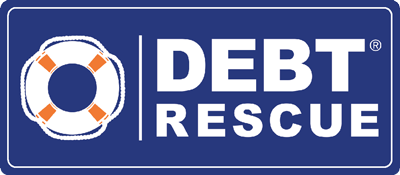Times are tough, and if cash flow is still tight, it’s time to up your accounts receivable game.
The more debt you’re owed, the less working capital you have to run your business and pay your own bills. Worst case, your business could be in serious trouble.
According to Debtplacer, small businesses in Australia are owed an estimated $15 billion a year in outstanding invoices.
To keep you out of these statistics, here are our recommendations on how to get invoices paid on time and reduce bad debt.
Perform customer or client credit risk checks
Before you take on a new client or customer, carry out credit checks on them first. If their payment history, including payments and legal records, doesn’t look great – don’t take the relationship any further to minimise future risk of bad debt.
Not all privately held customers will want to share their financial and other information with you, but there are other avenues you can take:
- Run a credit report
- Ask for trade references
- Look at the customer's internal and external environments, e.g. are they associated with any failed companies, political and economic instability, etc.
Clearly spell out payment terms
Some simple but effective advice on how to get invoices paid on time is to make sure you include your payment terms within your T&Cs and proposal, as well as on your invoices.
Your terms should detail your required timeframe for payment, available payment methods, the process and penalties you have in place for late or non-payment, and any exceptions.
Standard terms of payment include seven days, 21 days and 28 days. However, faster terms, for example, five days, can help you get paid faster and are less likely to slip off your customer’s radar.
Ask for an upfront initial payment
One way to ensure you never lose out is to ask for 100 per cent payment upfront. From your perspective, this keeps the cashflow flowing and avoids time and effort spent chasing those bad debts.
An alternative to this, and a friendlier option for your clients, is to ask for a percentage of the total amount upfront. This could be as much as 50 per cent or as little as 10 per cent; just consider your industry and customers.
Offer a variety of payment methods
People are spoilt when it comes to choice of payment method today, so don’t be the supplier who only offers one way to settle.
By offering your customers or clients a variety of payment methods, from cash and cheque to debit and credit card, to bank transfer and PayPal, you can encourage people to pay invoices faster by their preferred option.
Payment systems, such as Apple Pay, Square and Stripe, are an easy way to set up credit card payments for your business. The software turns your tablet or device into a payment register for a point of sale (EFTPOS) system.
Automatically manage unpaid invoices
When invoices don’t get paid, chasing up debtors for amounts owing is a must if you want to recover the bad debt. But rather than spending your own valuable time composing and sending out reminders, let the software do it for you.
Small business accounting software, such as XERO, QuickBooks, and MYOB, allow you to turn on automatic customised invoice reminders when they fall overdue.
You can use the standard settings, seven, 14 and 21 days, or set your own terms.
Follow up unpaid invoices, pronto
Whether you’re using automated software or not, it pays to follow up on overdue invoices immediately. So don’t wait until seven days have passed. Instead, send out an email or reminder the very next day.
Make sure your tone is helpful at this stage. Perhaps they’ve misplaced their invoice or simply forgotten. Also, let them know that you’ll call in a few days if you don’t hear from them or receive payment.
Increase the non-payment pressure
If you still haven’t gotten payment, call to ask when you can expect payment – this is more personal and can be more effective at encouraging action – and then follow up again or let your automated software do its thing.
Offer repayment schedules
If a client is having genuine trouble paying you, and it’s viable for your business, call them to discuss a workable payment plan. While getting the full payment in one go is preferable, getting small amounts at regular intervals is better than none.
Importantly, make sure your client is sticking to the repayment plan. If they’re not, follow up as above.
Engage a good debt collector
If you’ve tried your best to collect your amounts recoverable but still haven’t received payment after 60-90 days, you might want to hand the issue over to a debt collection agency.
They’ll have more clout when reaching out to your client or customer. In fact, the very mention of one may be enough to make them pay up. Agencies have the time and expertise to dedicate to it and can ensure you stay compliant.
While they usually charge a percentage fee, which varies by the amount owed, from 5 per cent to 35 per cent, you still get back the majority of the money. And every little bit counts when it comes to working capital.
Invest in trade credit insurance
To avoid becoming financially vulnerable to bad debt in the first place, look into trade credit insurance. This type of business insurance covers your accounts receivable and protects your business from unpaid invoices.
If you don’t get paid, you still get the cash.
Claiming a deduction for bad debt
As a business owner, you may be able to claim a deduction for income that can’t be recovered from a customer or debtor. However, you can only claim a deduction for bad debt, where you account for your assessable income on an accruals basis.
To claim, you must:
- Include the income in your tax return
- Determine the debt is bad
- Write off the debt
Visit the ATO website for more information
Bad debts can block your access to working capital and make or break your business. However, by following our recommendations above on how to get invoices paid on time and reduce bad debt, you can take back control and ensure your accounts receivable rarely end up overdue or unsettled.
If you have unpaid invoices and are struggling to survive and pay your own debts, get in touch with our team of debt solution specialists today on 1800 560 557 for professional, non-judgemental support and advice.
-137x60px.png)
.jpg)



